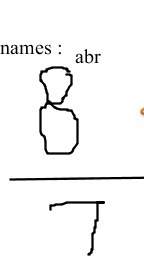The function p(x) is mapped to i(x) by a dilation in the following graph.
line p of x passes t...

Mathematics, 15.07.2019 22:40 taytaycola223
The function p(x) is mapped to i(x) by a dilation in the following graph.
line p of x passes through (negative 2, 4) & (2, negative 2). line i of x passes through (negative 4, 4) & (4, negative 2).
which answer gives the correct transformation of p(x) to get to i(x)?
i(x)=2p(x)
i(x)=1/2p(x)
i(x)=p(1/2x)
i(x)=p(2x)

Answers: 3


Another question on Mathematics

Mathematics, 21.06.2019 17:30
Adozen bananas weigh 3 pounds how many ounces does 1 banana weigh
Answers: 1

Mathematics, 21.06.2019 17:30
Which of the following tables represents exponential functions?
Answers: 1

Mathematics, 21.06.2019 18:30
Which equation represents the model shown? a)1/3 divide 1/6 = 2 b)2/3 divide 1/6 = 2/18 c)1/3 divide 1/6 = 1/18 d)2/3 divide 1/6 =4
Answers: 1

Mathematics, 21.06.2019 19:00
What is the expression in factored form? -x^2 + 3x + 28 a. (x-7)(x-4) b. -(x-7)(x+4) c. (x+4)(x+7) d. -(x-4)(x+7)
Answers: 2
You know the right answer?
Questions

History, 19.01.2021 22:40




Mathematics, 19.01.2021 22:40





Computers and Technology, 19.01.2021 22:40





Mathematics, 19.01.2021 22:40

Mathematics, 19.01.2021 22:40



Mathematics, 19.01.2021 22:40





